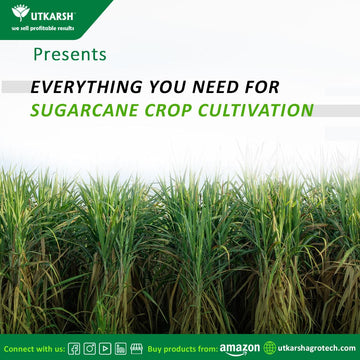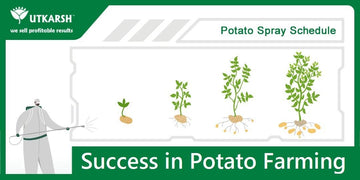
Chana – An Overview
Chana commonly known as ‘Gram’ or Chickpea is the most important pulse crop in India. Chana is used for both human consumption and to feed the animals and contributes to nearly 50% of the total pulse production in India.
The scientific name for Chana (or Chickpea) is Cicer arietinum. It is a legume growing annually from the Fabaceae family, and subfamily Faboidae. Consumed mainly for its protein content, Chana is also known as Bengal gram and Egyptian Pea.
The Chana plant grows up to 18 inches in height and has a bushy appearance. The plant has small and feathery leaves on both sides of the stem and favors the cold season.
Chana is eaten in many forms – both as whole fried and boiled or salted. Generally cooked in the form of split pulse and eaten, Chana is considered to have medicinal effects and is also used for blood purification purposes. Chana has immense nutritional value with roughly 21% protein, 61.5% carbohydrates. Along with these vital nutrients, Chana is also rich in Iron, Calcium, and Niacin.
Chana comes in a wide variety with Desi Chana being largely consumed in the country. This variety of Chana has small and darker seeds with a rough coat. Desi Chana is found in various forms and colors – such as black, green, and speckled. Desi Chana is often hulled and split to make Chana Dal, which has a vital use in Indian households. Another notable variety being largely consumed is Kabuli Chana, which is a light-colored and larger variety with a smoother coat in comparison.
Field Preparation for Chana Farming
- A space is chosen that receives at least 6 to 8 hours of sunlight with an overall cooler climate. A bit of afternoon shade is required in case the place is in a warmer climate area.
- A supplement-rich soil is chosen, which depletes well.
- To preserve dampness, the soil is cultivated with an animal-drawn/tractor-drawn blade harrow attached to a heavy wooden log. The cycle helps in weed control and makes the seedbed smaller.
- Later on, shallow development is done with a country plow late in the evening for light soil, habitually to conserve moisture, and for effective weed control.
Seed and Sowing
The second fortnight of October is the ideal time for planting, in a large portion of the chickpea developing spaces of northern India. If we talk about peninsular India, the first fortnight of October can be considered as the ideal time for chickpea planting.
Early planting of chickpea can lead to excessive vegetative development and poor setting of pods. The early planted harvest experiences more wilt due to the high temperature around then.
The crop may be sown by seed drill or nearby furrow and column dividing ought to be 30-40 centimeters. For one hectare of land, a seed pace of 75-100 kg for each hectare will be adequate, contingent on seed size. The seed should be placed 8-10 centimeters deep and prior to planting, the shallow is treated with 0.25 percent Thiram or Carbendazim (Bavistin).
Planting
Making 1.5-to 2-inch openings, 3 to 4 inches apart, and dropping a seed in everyone, followed by covering them with soil is what the routine planting process looks like.
Water has to be given routinely. Like Productivity, sowing the seeds with proper depth and distance is vital.

Growing
If the seeds are able to sprout within 10 to 14 days, it is a normal phenomenon. Soil is to be kept moist, subsequently one should water routinely and equally all through the developing season.
In cooler regions, chickpea plants will require about an inch of water each week, however in hotter environments, water prerequisite can increment to two inches generally. At the point when plants are 2 to 3 inches tall, plants should be thinned out so that there remains a solitary plant every 6 inches. This is done to help the ordinary development processes.
Ordinarily, scissors can be utilized to manage or thin them. Just the additional development of each plant is managed through scissors with the goal that the underlying foundations of adjoining plants are not disturbed.
Fertilizer Application – Utkarsh Integrated Fertilizer Management
Weed control is a fundamental movement in chickpeas as an invasion of weeds is a serious issue for this crop. One hand weeding or burying culture with a hand cultivator or wheel digger after 25-30 days can be done, and if necessary, then, at that point, the second round of weeding can be done too.
Fertilizer & spray program of Chana Farming for 1 acre
Chana/chickpea fertigation schedule
| Stage of crop |
Fertilizer application
method |
Time for use | Name of products | Quantity in kg/liter |
| Before
sowing |
Soil
application |
Basal dose | FYM | 1-2 t/acre |
| SSP | 100-125
kg/acre |
|||
| Urea | 15-20 kg/acre | |||
| MOP | 15 kg/acre | |||
| Marvelz – G | 5 kg | |||
| Seed
treatment |
At sowing |
Microbes/
Trichoz |
3 gm/kg | |
| Rhizoz | 240 ml/acre | |||
| After
germination |
Drenching | 5 leaves
stage |
Microbes | 1 kg/acre |
| Vamoz L | 1 litre/acre | |||
| Flowering | Spray | 90 DAS | F plus | 250 ml/acre |
| Horse Power | 2 litre/acre | |||
| Seed
development |
110-120 DAS | Bhim Plus | 250 ml/acre | |
| F enhancer | 500 gm/acre | |||
| 13:00:45 | 1 kg/acre | |||
| Insect- Pest/Disease
observed |
Spray | Armyworm, cut worms, | Bio Clean Sweep | 2-3 ml/liter |
| Spraying | Pod borer | Neemoz CP | 4 ml/litre | |
| Blight, Gray
Mould, Rust |
FungFree | 2 ml/liter | ||
| Drenching or with
irrigation |
Wilt, Collar rot, root rot | FungFree | 1 litre/acre |
To know more about profitable Chana cultivation, Watch our webinar recording of Profitable Chana Farming:
Utkarsh has launched 1-Acre Kits of Banana, Papaya, Gourds, Ginger, Okra & many more
Simply order the number of 1-Acre-Kits as per the size of your farm and get the entire range of requirements covered in it.
Simply select the kit, that’s it. => Lesser Cost & Higher Profitability.
To shop a Farming kit Click on this: https://utkarshagro.com/product-category/kits/
You can easily get our products on amazon and on our website.
All the products mentioned in this blog can be found on Amazon as well as the website of Utkarsh. Also, the method of application and the required dose can be easily found on our Website – Utkarshagro.com/shop.
उत्कर्ष के संग आपकी हर फसल होगी सफल।
Available on UtkarshAgro.com | Amazon | Flipkart | AgriBegri | Bighaat | Moglix | Agrosiaa
Visit Website: https://utkarshagro.com/
Now COD and EMI option is available.
May you have the best yield ever! Feel free to contact Utkarsh for any doubts and advice.
If you have any further queries, feel free to reach out to us on 919824133044, +919924864422, +919824300544
Landline: 02621-255972
Visit our website: https://utkarshagro.com/
Email ID: rd@utkarshagro.com
Stay connected with us to learn more tips and tricks. All you have to do is follow us here:
Chat: wa.me/918866543678
Facebook: https://www.facebook.com/utkarshagrochem/
Instagram: https://www.instagram.com/utkarshagrochem/
Twitter: https://twitter.com/UAgrochem
LinkedIn: https://www.linkedin.com/company/utkarsh-agrochem-pvt-ltd/
Pinterest: https://in.pinterest.com/utkarshagrochemsocial/
Written by:
Pratik Sinha
Affiliate Writer with Monkey Ads










